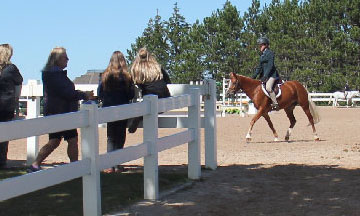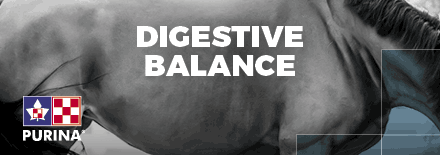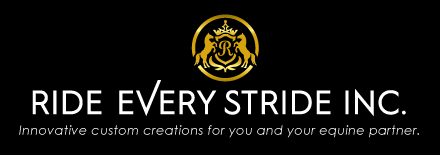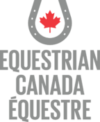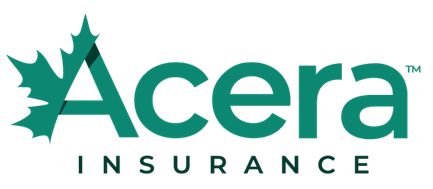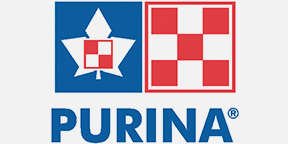Dressage Canada would like to thank everyone who took the time to respond to the proposal for an equitation pilot to be launched in 2014. The enthusiasm and support has been very encouraging. They heard from riders, coaches and organizers in BC, Alberta, Manitoba, Ontario, Quebec and New Brunswick. Among the responses were some good questions as well as some very useful suggestions.
Several of you have asked for the program to include amateurs and so it will be expanded in the second year. Taking into account the other suggestions and requests, the rules have been revised as outlined below.
For the 2014 competition season, it is proposed that there be a separate division for these age groups who compete in an equitation class AND either Training OR First level dressage tests. These will be Bronze level classes.
This division can be offered at all types of competitions (Development or club, Bronze, Silver and Gold). In prize lists, it should be called “Equitation Pilot”. The prize list should also specify which Training or First Level dressage test is to be used in the equitation pilot. E.g. Training Level test 1, Equitation Pilot (13 and under); First Level test 1, Equitation Pilot (14 to 18yrs). It is hoped that organizers will offer championship ribbons for the Equitation Pilot.
The rules are as follows for the Equitation Pilot in 2014:
1. Level of EC membership required: Bronze License (at EC competitions), no passport, no Dressage Canada Membership required;
2. DC levy: None
3. Age groupings: 13 and under; 14 to 18
4. Dress and Saddlery as per Section E dressage rules.
5. The Athlete: The athlete’s position, seat, and use and effect of aids will be judged as described in section 1.20 (FEI 418).
6. Movements shall be performed by the athletes simultaneously; however, the judges may ask for independent execution of certain tests.
7. Athletes must be judged at the medium walk, working trot (sitting and rising), and working canter in both directions.
8. Training Level: in judging the position, seat, and use of aids, judges may include the following movements and exercises:
Free walk
Progressive transitions from one gait to the next in both directions
Transitions from walk to halt and vice versa
Change of direction across the diagonal, down the center line, across the arena, and/or by making a half-circle at the walk or trot
9. First Level: additional movements from which judges may choose: to be ridden in small groups or independently:
Progressive transitions
Leg yield
Changes of lead through trot
Serpentine at the trot
Shallow loop serpentine with counter canter
Trot lengthening and/or canter lengthening
Riding without stirrups
10. Number of horses required to work at the same time shall be limited to a maximum of eight. For safety and convenience, groups may be divided into smaller sections. Judges may also limit the number of horses required to canter at the same time.
11. Scoring: scores from the equitation class will be added to the test score to determine the champion and reserve champion.
12. Score sheets: The EC Dressage Seat Medal class score sheets available from the DC website www.equinecanada.ca/dressage must be used. The final score for each athlete must be posted at the conclusion of the class.
13. Rider scores and placings will be determined by averaging the total scores from each judge.
14. Competition Ring: classes may be held in an enclosed ring that is larger than a standard dressage arena. If such a space is not available, an open schooling area is permitted. Classes may be held in either the small or regular dressage arena. If the class is held in a dressage arena, no more than 4 horses shall be asked to canter at the same time.
15. Officials: One or more judges may officiate.
MISCELLANEOUS RULES
Unauthorized Assistance is prohibited.
Use of voice will be penalized.
Horses will be disqualified for lameness.
Pertinent Elimination as outlined in 9.5
Disqualification as outlined in 9.6
About Dressage Canada
Dressage Canada, as a committee of Equine Canada, is the national governing body for dressage in Canada. Dressage Canada’s objective is to foster the growth of dressage and the pursuit of excellence in the sport at the local, national and international levels. Dressage Canada provides support and guidance to both amateur and professional through the following programs: coaching education and programs, officials’ education and programs, rules and qualifying criteria, sport development, and publications and awards. For more information about Dressage Canada, please visit the Dressage section of the Equine Canada site or connect with us on Twitter at www.twitter.com/dressagecanada or Facebook at http://tinyurl.com/lp8cnd.
